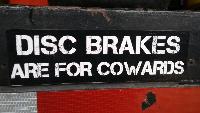|
Author
|
Message
|
|
Shaggy
|
|
|
Group: Forum Members
Last Active: 7 Years Ago
Posts: 123,
Visits: 609
|
I cant think of any, sure there are cars with solids, but i cant come up with any that were not even plumbed for hydraulics. Heck, off the top of my head i cant even come up with a 6 or 4 that was solid-only. I find it odd that ford was this far behind the times.
|
|
|
|
|
Hoosier Hurricane
|
|
|
Group: Moderators
Last Active: 9 hours ago
Posts: 3.7K,
Visits: 323.0K
|
I believe the '58 332 cubic inch FE had solid lifters. The FE high performance engines used solid lifters.
John - "The Hoosier Hurricane"

|
|
|
|
|
Sandbird
|
|
|
Group: Forum Members
Last Active: 2 Years Ago
Posts: 131,
Visits: 542.7K
|
All Studebaker engines had solid lifters including their R Series performance engines of the 60's.
|
|
|
|
|
MoonShadow
|
|
|
Group: Forum Members
Last Active: Yesterday
Posts: 4.6K,
Visits: 38.4K
|
As I recall the school of thought was split in the beginning. Some believed solid lifters were the only way to go. I can remember people getting solid cams and lifters to put in there modified motors to get more out of them. It's like everything automotive, when something new comes out there are always those that resist the change. How many true stick shift cars do you see around in the late 20th century.
Y's guys rule!
Looking for McCullouch VS57 brackets and parts. Also looking for 28 Chrysler series 72 parts. And early Hemi parts.
 
MoonShadow, 292 w/McCulloch, 28 Chrysler Roadster, 354 Hemi)
Manchester, New Hampshire
|
|
|
|
|
1960fordf350
|
|
|
Group: Forum Members
Last Active: 3 Years Ago
Posts: 110,
Visits: 2.9K
|
My dad had a 77 Dodge Aspen with a 225 straight 6. It had mechanical lifters.

|
|
|
|
|
Shaggy
|
|
|
Group: Forum Members
Last Active: 7 Years Ago
Posts: 123,
Visits: 609
|
MoonShadow (1/7/2018)
As I recall the school of thought was split in the beginning. Some believed solid lifters were the only way to go. I can remember people getting solid cams and lifters to put in there modified motors to get more out of them. I understand the whole reason for solids in a performance engine, especially before anti-pump up lifters and such and i understand for a reliability standpoint(boats, industrial, ect), but for a mild performance motor it seems like an odd call when dodge had them in '54 and scrub had them in 1950. As mentioned stude v-8s had solids, but they were introduced well before the Y-block in '51, the slant 6 came out in '59 and was solid only when introduced so i guess it fits the bill
|
|
|
|
|
PF Arcand
|
|
|
Group: Forum Members
Last Active: Last Year
Posts: 3.3K,
Visits: 238.8K
|
At a guess, I suspect Ford engineers were being cautious because the engine was also intended to be used in Medium duty trucks. Further, as I recall many early hydraulic lifter top ends tended sometimes to be troublesome, possibly because to the oils of the day. It's my understanding (but I stand to be corrected? ) that 1950s oils often contained paraffin which tended to promote sludge, particularly if oil changes & crankcase venting were neglected...
N.B- Further, for what ever reasons, the Y-Block was designed with solid "mushroom lifters" which probably couldn't be hydraulics..
Paul
|
|
|
|
|
Hoosier Hurricane
|
|
|
Group: Moderators
Last Active: 9 hours ago
Posts: 3.7K,
Visits: 323.0K
|
I have a '68 Chilton manual that lists Chrysler products 273/318 V-8s with solid lifters at least until '68.
John - "The Hoosier Hurricane"

|
|
|
|
|
2721955meteor
|
|
|
Group: Forum Members
Last Active: Last Year
Posts: 927,
Visits: 190.0K
|
58 fe 332 aswell 406 and 427 had no oil galleries for hyd lifters 352 361 428 had the oil gallery drilled for hyd. all fes had a seperet gallery to lube the rockers,think oil came up a head stud hole and into the rocker shaft via a short hole in heads. i read some later 427s for marine had hyd
lifters tho never had 1 apart. 406s had a different lube system with 2 relief valves,high pressure at pump,and secondary relief at rear of the main oil gallery. flywheel had to be off to axcess. can't understand why ford went to mushroom lifters when the lincoln and truck engines had non mushroom type. will be interesting to hear from one that knows. the overhead valve tractor engines also had mushroom leavers
|
|
|
|
|
Ted
|
|
|
Group: Administrators
Last Active: Yesterday
Posts: 7.5K,
Visits: 205.8K
|
|
|
|
|